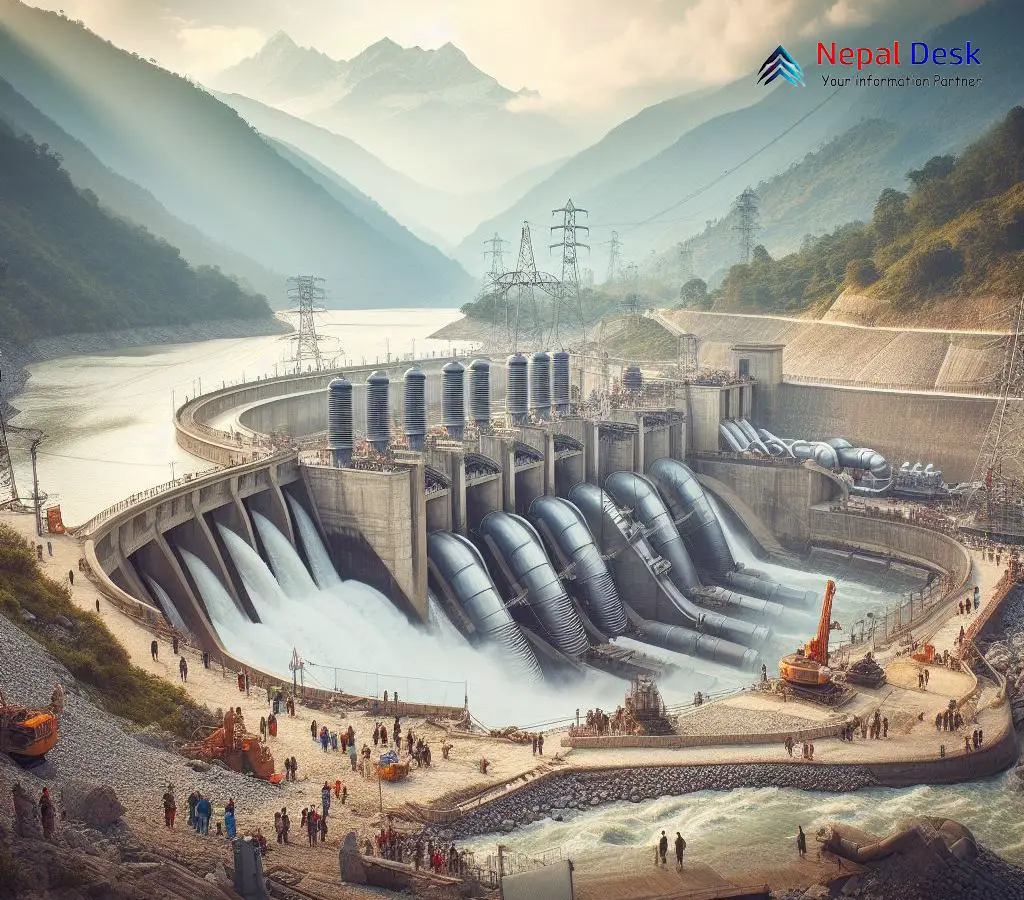China Invests in Langtang-Bhotekoshi Hydroelectricity Project
Published Date

Published Date
Bank of China invests almost Rs. 20 billion in the 120 MW Langtang-Bhotekoshi Hydroelectricity Project, ensuring its progress towards completion.
⏱ 3 min read
The Langtang-Bhotekoshi Hydroelectricity Project, located in Rasuwa, has successfully secured foreign investment amounting to roughly Rs 20 billion. With a generation capacity of 120 megawatts, the project is currently under construction.
Deepak Khadka, a Nepali Congress leader and Member of Parliament who is also one of the project's key promoters, stated that the Bank of China from the People's Republic of China has contributed Rs 19 billion and 857 million to the project. The total project expenditure is estimated at Rs 24 billion, 954 million, and 473 thousand.
The promoters have invested Rs 5 billion, 97 million, and 473 thousand themselves as self-capital, approved by the Nepal Rastra Bank. The remaining Rs 19 billion and 857 million have been acquired as loans from the Bank of China.
MP Khadka confirmed that the project's financial management is fully arranged. The Department of Electricity Development had set a deadline of February 14 to secure funding for the project.
In terms of investment distribution for this endeavor, Chinese enterprises hold a 90% stake while Nepali partners control the remaining 10%. The Langtang-Bhotekoshi Hydroelectric Project promoter company signed an agreement with the Export-Import Bank of China, Sichuan branch on January 7, 2023, to facilitate this investment structure.
The Chinese construction firm, Sichuan Huwafei Energy Investment Company Limited, initiated by MP Khadka, is responsible for building this hydroelectric facility. The foundation was laid in January 2020, with construction work currently underway.
Rasuwa district has several ongoing projects with a combined capacity of producing up to a total of 584 megawatts of power at various developmental stages.
Nepal's Hydroelectric Sector: Potentials and Challenges
Nepal's hydropower sector holds great potential, with installed capacity rapidly increasing from just 640 MW in 2011 to around 2,200 MW today. The estimated theoretical total capacity is 83,000 MW, though around 43,000 MW is deemed practically sustainable.
Since the 1960s there has been noticeable progress in hydroelectric generation in Nepal. In the 1960-1970 time frame, Nepal generated 27.5 MW. Before that, only 1.1 MW of total electricity was generated. Over the coming decades, it constantly kept growing, and by 2005, Nepal had an installed capacity of 556.8 MW. Ambitious government targets aim for 10,000 MW by 2030 and 30,000 MW by 2035. Renewed foreign investment interest from various countries and the World Bank showcases Nepal's vast potential. Various hydropower projects like the Upper Tamakoshi Hydropower Project, Budhigandaki Hydropower Project, West Seti Hydropower Project, etc. have been taken as "National Pride" projects by the Ministry of Energy, Water Resources and Irrigation.
Related:
- Budhi Gandaki Hydropower gearing up for swift construction
- World Bank Invests in Upper Arun Hydroelectric Project
However, major challenges remain around financing large projects, upgrading transmission infrastructure, minimizing environmental impacts, land acquisition complexities, and local community concerns. Striking a balance between rapid capacity growth and sustainable development is crucial.
Overall, with the right policies and investments in place, Nepal could harness its immense hydropower resources to meet domestic demand and become a major clean energy exporter in the region. However realizing this potential requires overcoming significant financial, technical, social, and environmental hurdles.
